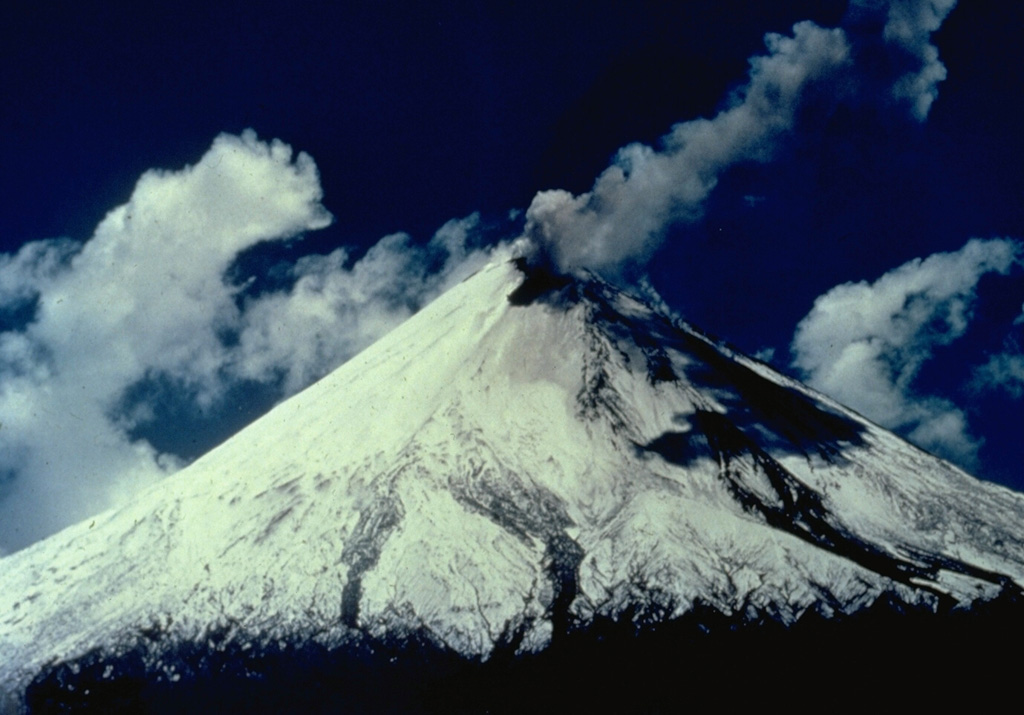Image GVP-04491

Activity seen in this August 1976 view of the west flank of Sangay volcano is typical of a long-term eruption that began in 1934. An ash plume rises from one of several summit craters. Much of the dark area on the western flank is a shadow, but a dark lava flow can be seen descending the slopes of the volcano. Frequent explosive eruptions and occasional lava flows have constructed Ecuador's most symmetrical volcano. It rises to over 5200-m altitude above the jungles of the western Amazon basin.
Photo by Jean-Christophe Sabroux, 1976 (courtesy of Minard Hall, Escuela Politécnica Nacional, Quito).
![]() This image is made available under the Creative Commons BY-NC 4.0 license terms.
This image is made available under the Creative Commons BY-NC 4.0 license terms.

Sangay
